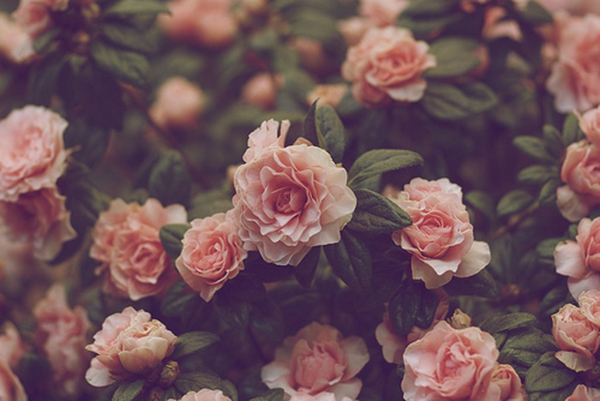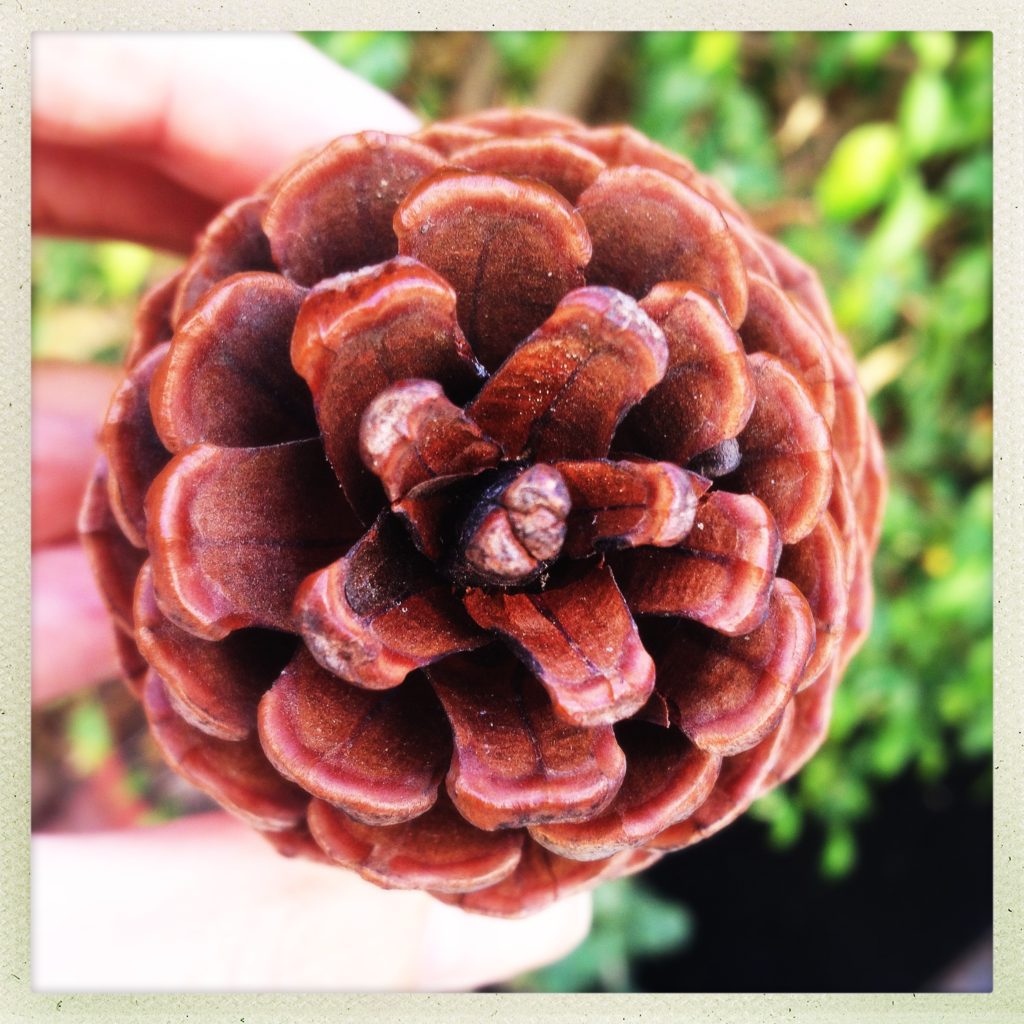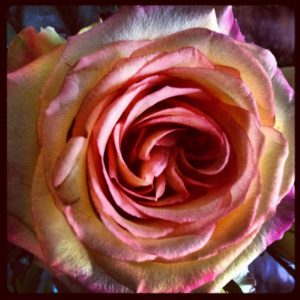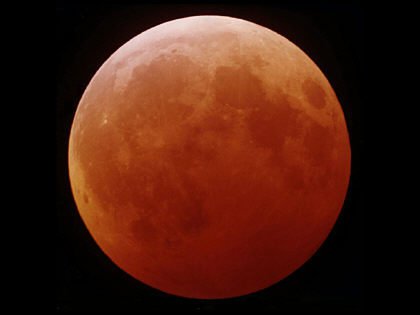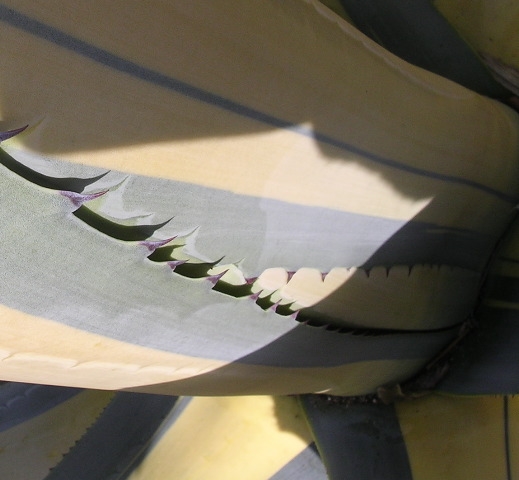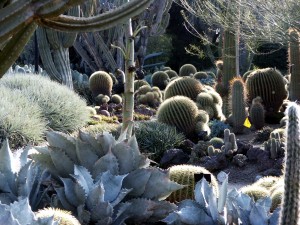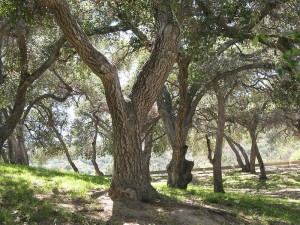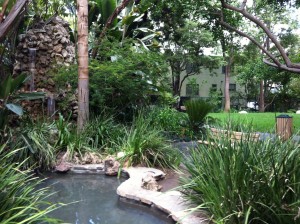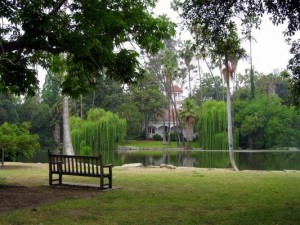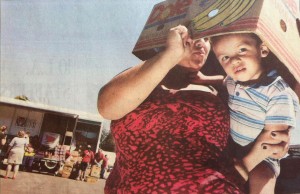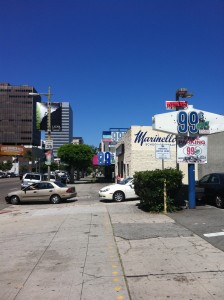Like almost every morning, I took the dogs to the park for a good, over an hour walk. While they were enthusiastically hunting and chasing squirrels, I discovered this beautiful clean and completely intact pine cone. I thought of a brief chat I had had with a very friendly Korean woman, a few weeks ago, who, in her broken English, had shown me how she uses simple objects from nature, like pine cones, or the rough bark of a tree to massage parts of the body. The principle being that of traditional acupressure.
So I picked the cone up and carried it with me, alternatively clenching it in each hand for a few minutes, the opened, flexible scales giving way in the process, massaging the palm of my hand and strengthening my fingers. I am very much a practical, hands-on person who loves writing and playing the piano. So I like to keep my hands and fingers strong and nimble. I also believe, that being in touch, so actually touching something from nature is per se healing. My favourite yoga teacher mentioned the other day that walking barefoot, also known as “earthing”, is actually a scientifically-researched practice with a number of remarkable health advantages that stem from the relationship between our bodies and the electrons in the earth. The planet has its own natural charge, and we seem to benefit greatly when we’re in direct contact with it.
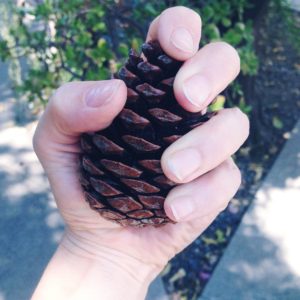 Walking my rounds with the dogs, pine cone in hand, I passed one of the homeless people who occupies the same park bench every morning at around 8am. My best guess is that he is schizophrenic because sometimes you can hear him angrily shouting obscenities from the other side of the park. But then, when he has his “lucid” moments, he is a very chatty, well educated and friendly gentleman who always has his belongings stacked very neatly and tidily next to him and a handkerchief on his lap when eating his breakfast.
Walking my rounds with the dogs, pine cone in hand, I passed one of the homeless people who occupies the same park bench every morning at around 8am. My best guess is that he is schizophrenic because sometimes you can hear him angrily shouting obscenities from the other side of the park. But then, when he has his “lucid” moments, he is a very chatty, well educated and friendly gentleman who always has his belongings stacked very neatly and tidily next to him and a handkerchief on his lap when eating his breakfast.
In passing, I greeted him and he immediately asked, “What’s that? A pine cone?” I said, “Yes, I’m massaging my hands with it and later, I’ll take it home…” He interrupted and said, yes, you can decorate the table with them at Thanksgiving.” We immediately struck up a conversation about all of the things you can do with pinecones, smell them, eat the pine seeds, burn them (the sap ignites fires very well) and I mentioned how beautiful they are in their perfect symmetry, and he added, “like everything God creates”. I replied that sadly, many people don’t see these beautiful things that surround them anymore. No, he said:
“They don’t stop to smell the roses, they’re too busy cutting them”.
I thought his point was well taken. I think that today, most people are fixated on “owning” things, as in having a collection to show off to others that is as vast as possible. This collection of images serves to then quasi adorn a virtual online persona for others to admire. Objects are taken into possession via photographs on Facebook and Instagram but only hastily and superfluously consumed and accessorized but not emotionally absorbed. Historically, a photo acted as a substitute, a token, a memento. Now it seems to have replaced the actual experience. When the image is then shared there’s no authentic contact with the actual object, the full experience is kept out of range, not only visually but also tactually. It’s a way of distancing oneself from an authentic experience in quite a detached and guarded but also very possessive way.
Feeling a sense of connection to nature or life itself
Even science backs this up: a study in the Journal of Personality and Individual Differences suggests that appreciating both the meaningful things and people in our lives may play an even larger role in our overall happiness than previously thought. Rutgers University psychology professor Nancy Fagley’s survey zeroed in on eight aspects of “appreciation“, including awe – or feeling a sense of connection to nature or life itself – and living in the present moment.
And you, have you stopped to smell the roses today? Or are you too busy cutting them?
